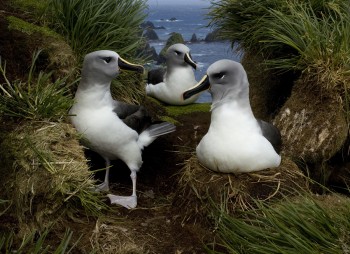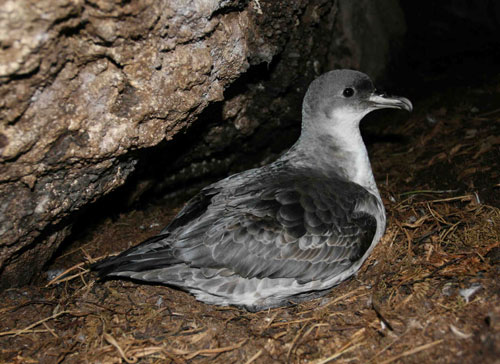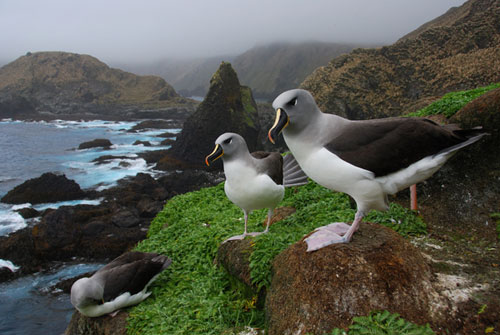BirdLife International’s Globally threatened Seabird Forum has been considering the case of the Shy Albatross Thalassarche cauta, endemic to Australia and currently listed as globally Near Threatened. Its on-line report can be read here along with expert comment on the proposal to uplist it to Vulnerable.
The report concludes “Given the threats affecting the species, the ongoing declines in the 30% of the population during the last 10 years, and the projected future declines, this species appears to qualify for uplisting to Vulnerable under criterion A2bde+3bde+4bde.”
However, following the expert commentary it received BirdLife has decided to postpone a decision on this species and keep the discussion open until 2017, while leaving the current Red List category unchanged at Near Threatened in the 2016 update.
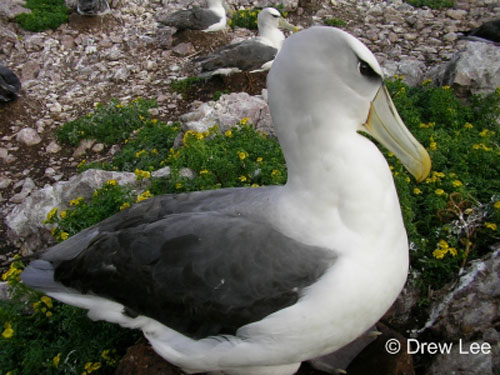
Shy Albatross on Albatross Island, photograph by Drew Lee
Selected Literature:
Abbott, C.L., Double, M.C., Baker, G.B., Gales, R., Lashko, A., Robertson, C.J.R., & Ryan, P.G. 2006. Molecular provenance analysis for shy and white-capped albatrosses killed by fisheries interactions in Australia, New Zealand and South Africa. Conservation Genetics 7: 531-542.
Alderman, R., Gales, R., Hobday, A.J. & Candy, S.G. 2010. Post-fledging survival and dispersal of shy albatross from three breeding colonies in Tasmania. Marine Ecology Progress Series 405:271-285.
Alderman, R.; Gales, R.; Tuck, G. N. & Lebreton, J. D. 2011. Global population status of shy albatross and an assessment of colony-specific trends and drivers. Wildlife Research 38: 672-686.
Baker, G.B., Double, M.C., Gales, R., Tuck, G.N., Abbott, C.L., Ryan, P.G., Petersen, S.L., Robertson, C.J.R., and Alderman, R. 2007. A global assessment of the impact of fisheries-related mortality on shy and white-capped albatrosses: conservation implications. Biological Conservation 137: 319-333.
Thomson, R.B., Alderman, R.L., Tuck, G.N., Hobday, A.J. 2015. Effects of climate change and fisheries bycatch on Shy Albatross (Thalassarche cauta) in southern Australia. PLoS ONE 10(6): e0127006. doi:10.1371/journal.pone.0127006.
John Cooper, ACAP Information Officer, 02 December 2016
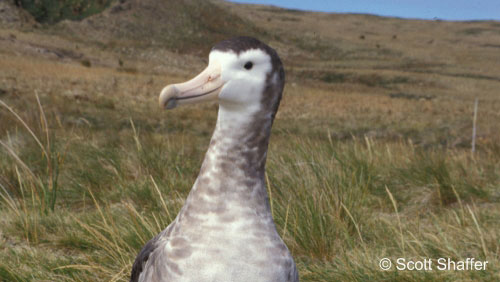

 English
English  Français
Français  Español
Español 